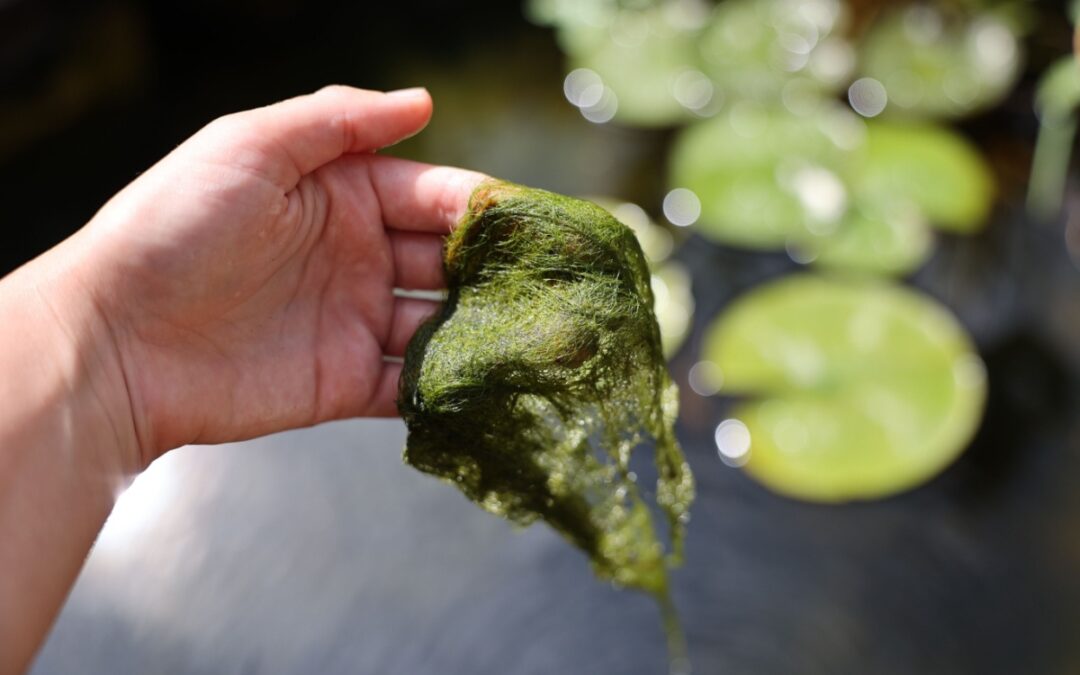When you own a pond or a lake, algae inevitably becomes a part of the aquatic ecosystem. These microscopic organisms are not inherently harmful. In fact, algae are unicellular or multicellular forms of life that play an integral role in food chains and nutrient cycles. However, excessive algae can lead to unsightly and potentially dangerous algal blooms that upset your waterbody’s ecosystem. Understanding the common types of algae, their characteristics, and their potential impacts can help you maintain a healthy aquatic life.
What Types of Algae Can You Expect to Find in Your Pond or Lake?
Algae, characterized by their photosynthetic ability, lack of vascular tissues, true roots, stems and leaves, and varying cellular structures, are classified into different groups based on their pigmentation, cell walls, and form. In ponds and lakes, several types of algae are frequently found, each with unique implications for the health of your aquatic system. The most common types you’ll likely encounter are planktonic algae, filamentous algae, and macroalgae.
Planktonic Algae
Planktonic algae consist of free-floating single cells or small colonies suspended in the water column. They are microscopic organisms that often form a “pea soup” or “green water” appearance when blooming. These algae may vary in color from green to red, brown, and even golden. While they are an essential food source for zooplankton and small fish, uncontrolled blooms can deplete oxygen levels, cause fish kills, and produce unpleasant odors.
Identifying Characteristics:
- Appearance: Water appears cloudy or discolored, often a deep green or red.
- Impact: Planktonic algae can significantly reduce water clarity and contribute to oxygen depletion when blooms die off.
- Control Tips: Nutrient management is critical for preventing planktonic algae blooms. Reducing phosphorus inputs from runoff, decaying organic matter, or other sources helps limit their growth.
Filamentous Algae
Filamentous algae, commonly referred to as “pond scum,” form long, thread-like structures. They often clump together, creating dense mats that float on the surface or grow along the edges of the water body. While a certain amount of filamentous algae is natural and even beneficial, excessive growth can obstruct aquatic life and recreational activities.
Identifying Characteristics:
- Appearance: Floating mats or submerged growth resembling tangled green hair or fine threads.
- Impact: Dense mats can impede water movement, clog fish gills, and cause oxygen depletion during decomposition.
- Control Tips: Manual removal can help reduce biomass, but nutrient management and aquatic weed control practices are necessary for long-term prevention.
Macroalgae
Macroalgae are larger species of algae that can be seen with the naked eye — think of seaweed. Unlike planktonic algae, which float freely in the water column, macroalgae often anchor themselves to solid surfaces like rocks or other submerged structures. These groups of algae include various species found in freshwater and marine environments. While beneficial in moderation, unchecked growth can lead to dense mats that disrupt the balance of your pond or lake.
Identifying Characteristics:
- Appearance: Large, often branching or leafy structures anchored to substrates. They can vary in color from green to brown or red, depending on the species.
- Impact: Dense growth can obstruct water flow, block sunlight, and deplete oxygen during decomposition. It can also interfere with recreational activities like swimming and fishing.
- Control Tips: Reducing nutrient inputs from runoff, managing sediment buildup, and conducting manual or mechanical removal are effective ways to control the spread of macroalgae. Where necessary, herbicides can be used as part of an integrated management plan.
Maintaining Healthy Aquatic Systems With Aquagenix
Each type of algae plays a specific role in the aquatic environment, but excessive algae growth can lead to unsightly, sometimes harmful conditions. Effective aquatic plant identification, proactive management, and ongoing monitoring are important steps to preserving a balanced ecosystem.
Since maintaining healthy water quality can be challenging due to varying local conditions, runoff issues, and changing seasonal factors, you may want to consider partnering with an experienced aquatic management company like Aquagenix. Our team specializes in algae identification, nutrient management, and comprehensive aquatic weed control solutions to help restore and maintain your pond or lake’s beauty and health. Whether you’re struggling with filamentous algae mats, a planktonic bloom, or toxic blue-green algae, we have the expertise to deliver tailored treatment plans that meet your unique needs. Reach out to Aquagenix today to start creating a customized plan for tackling common types of algae in your pond or lake!


Recent Comments